Weekly Fishing Report: August 23
As the summer vacation time for kids begins to approach the end, I could not help but notice many of them are enjoying more simple things to do with the week or so left before they go back to school. Summer camps and other organized types of children’s activities are winding down, or already over for many families. With the exception of some last minute family vacations, parents and kids are left to do simple things together, and closer to home. While taking an evening cruise around local waters I could not help but notice more than a few docks were occupied by kids and adults fishing or crabbing, and the number one fish for entertaining kids in the Chesapeake Bay is the white perch. For those more landlocked, the bluegill sunfish is ready and willing to step up to the task. The white perch tends to be found near any dock or oyster bottom and a simple bottom rig baited with peeler crab, grass shrimp or bloodworms is hard to beat. Many aspiring fishermen can chalk up the white perch as the first fish they caught, and through their lifetimes continue to pursue them for their fighting entertainment and table fare. Let us all pay tribute and respect to the white perch; truly a wonderful gift from the Chesapeake.
Before we get into this week’s fishing report, I wanted to remind everyone that they can submit their own fishing reports and photos to the Maryland Angler’s Log via email at fishingreports.dnr@maryland.gov. To post a report please email your name, hometown, photos, location information and additional content for your report. All information is optional, but encouraged. New reports are posted daily during the busy fishing seasons.
Presently there are large midday power generation releases at the Conowingo Dam causing higher water levels and turbulence in the dam pool and adjacent waters. Much of this water is discolored and is causing water clarity issues in the lower Susquehanna River. The best fishing for striped bass continues to be in the early morning hours; casting swimshads, topwater lures or drifting live eels have been effective ways to fish. Farther down the river and near the Susquehanna Flats the early morning bite is the best and cloudy water conditions will hopefully improve shortly. Topwater lures have proven to be the best way to fish for striped bass and anglers will find largemouth bass will be part of the mix. Channel catfish are abundant in the river and channels leading away from the river mouth. Cut bait, chicken livers and nightcrawlers are some of the best options for bait on a simple bottom rig.
White perch fishing continues to be good in the upper bay’s tidal rivers and the best daytime fishing opportunities during this time of the year has been by bottom fishing in deeper areas with good bottom structure. Peeler crab, bloodworms and wild caught grocery store shrimp have been good baits to use. In the early morning and late evening hours it is best to cast small jigs and spinners near shallower shoreline structure. Channel catfish are abundant in the same regions of the tidal rivers and out in the bay and will take most any kind of cut bait.
The striped bass fishing action in the upper bay continues to focus on chumming and live lining spot at Swan Point, the Love Point area and between Sandy Point and Baltimore Point Lights near Podickory Point. Just about all of the action is occurring along the 30 foot to 35 foot channel edges. In recent days, the largest part of the upper bay fleet tended to be in the Podickory Point area. Despite crowding and a high amount of throwbacks, catches of fish over 20 inches have been good. Small bluefish have been part of the mix and being fairly pesky in regards to biting off mono or fluorocarbon leaders and cleaving spot craftily behind just the hook.
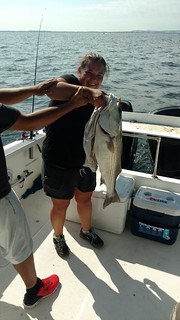
Natasha Hartman caught this nice striped bass on her birthday at the Bay Bridge piers. Photo by Jay Hartman
Trolling for striped bass in the upper bay region has been best described as a slow pick along channel edges. Most are trolling a mix of small spoons, red surge tube lures (hoses) and bucktails behind inline weights. Small bluefish offer some action, most often on small spoons. Breaking fish are being spotted now and then, most often in the evenings. Casting or jigging to breaking fish is always fun when one has a chance or trolling around the outside edges of breaking fish.
The Bay Bridge piers are always worth a look when in the area and jigging at the bases in the 40 foot depth range or drifting live spot to suspended striped bass. If drifting live spot or chunking to fish holding near the pier bases, someone will need to tend the helm since it is often suicidal to anchor near the bridge due to hang ups. Spot are being caught in the shallow portions of the bridge, in front of Sandy Point State Park and south of the bridge inside of Dolly’s Lump. White perch can also be part of the mix along with a few small croakers.
The middle bay region has been offering some good fishing for striped bass this week with striped bass spread out over a wide area but there are several areas of greater opportunity. There is some successful live lining of spot taking place on the outside 35 foot edge of Hackett’s Bar and Thomas Point. The best action has been taking place down at the False Channel at the mouth of the Choptank and it has been fairly crowded there. Spot are easy to find inside the Choptank so just about everyone is live lining and there is very little chumming going on. If one pokes around to similar channel edges such as south at RN2 suspended fish can be found. Small bluefish are ever present and can be pesky at times. Cutting up expired spot and chunking can often pay off when bluefish make it hard to send live spot down. Yes, bluefish will swarm on the chunks but if some weight is added, there is a better chance to get below the bluefish to striped bass. If nothing else you can even up the score and fill your smoker with some bluefish.
Breaking fish are being spotted at times in places like the mouth of the West River and near anchored ships. It is not uncommon for striped bass to hang out near the ships, especially since they’ll have lights on all night attracting bait. Trolling near breaking fish or near the ships and channel edges can produce a mix of striped bass, bluefish and the occasional Spanish mackerel. Salinities are somewhat depressed in the upper and middle bay so that may be keeping the Spanish mackerel back, surface water temperatures are about 81 degrees.
Bottom fishing for a mix of white perch and spot with a few croakers tossed in has been good in areas south of Kent Island and off Chesapeake Beach as well as in most tidal rivers where good hard bottom can be found. Peeler crab and shrimp have been working well for white perch and croaker; bloodworms will work especially well for the spot.
The lower bay region continues to offer some exciting fishing opportunities for everything from cobia to spot. The cobia continue to be found from the Middle Grounds north to the Target Ship and chumming has been the most popular way to fish for them. Cut bait or live eels are allowed to drift back into the chum slick and usually resting on the bottom is the best zone for the baits to be. Bluefish will of course be attracted to the chum slicks along with cow-nosed rays and occasional small inshore shark species.
Striped bass are being found in the lower Potomac River in the St. Georges Island, Piney Point area along the steep channel edge there and also on the channel edge at Cove Point. Live lining spot has been the most popular way to catch them but some have been having luck with jigging and trolling.
There have been good trolling opportunities in the shipping channel for a mix of bluefish and Spanish mackerel. Trolling with small spoons behind inline weights or planers has been the best way to get down to the fish. Most trolling has been blind, since there has not been much breaking fish action lately.
Bottom fishing has been good on both sides of the bay for a mix of species. Fishing for spot has been very good in the lower Patuxent River and the lower Potomac River and tributaries. Bloodworms has been the bait of choice although some report good success with artificial the bait, Fishbites. White perch are being caught on peeler crab and shrimp along with croakers, kingfish and a few blowfish. The action is much the same on the Tangier Sound side of the bay with speckled trout tossed in. Those specifically targeting speckled trout have been casting peeler and soft crab into marsh creeks, areas of fallen trees and bayside marsh edges. Casting Gulp Mullet soft plastics also have been catching fish as well as topwater lures in the early morning hours.
Weekly Bay Fishing Conditions Forecast Summary
(Aug. 23-30, 2017)
Maryland’s surface water temperatures are in the low 80s with deeper waters slightly cooler waters so start your search just above the “Do not fish below this depth.” Lots of Maryland waters will have adequate oxygen from surface to bottom. Algal blooms are present in numerous places in the bay so make sure to check our current algal maps to identify areas to avoid. Take advantage of the above average tidal currents Wednesday through Friday as a result of the recent new moon that occurred Tuesday. Aside from rain and winds from some pop-up thunderstorms Friday, bay conditions should be relatively stable for the upcoming week as a result of clear, sunny skies and cooling air temperatures through Aug. 30.
For the full weekly fishing conditions summary and more detailed and up-to-date fishing conditions in your area of the bay, be sure to check out Eyes on the Bay’s Click Before You Cast. Since this is a new feature for Chesapeake Bay anglers, drop us a line with comments or suggestions.
Recreational crabbers are finding very good crabbing in the lower bay region, good in the middle bay and fair in the upper bay region. In the lower bay region most are catching a full bushel of crabs per outing, the middle bay usually produces about a half bushel or more and the upper bay a half bushel or less. The eastern side of the lower bay has been producing some of the largest and heaviest crabs, usually in 6 feet of water of less. The middle bay region the crabs tend to be in that same zone of 6 feet or less. The Chester River in the upper bay region and the Elk River have been producing some of the better catches. There are a lot of small and light crabs being reported chewing up baits so many have switched to chicken necks from razor clams. Sometimes one may even find a hungry terrapin on the end of a trotline or in this case inside a collapsible crab trap.
Out in the western region of Maryland, Deep Creek Lake continues to be offer some good fishing opportunities for those willing to be out early and are able to dodge boat traffic as the morning wears on. Targeting some of the deeper shoreline structure and deep grass and rocks is usually a good bet; floating docks, fallen tree tops and sunken wood often will hold both largemouth and smallmouth bass. In the pre-sunup period of time, topwater lures offer a good chance at action. Whacky rigged stick worms or other soft plastics worked slowly near deeper structure is the way to entice a lazy bass to pick up one more snack before dozing off in shade for the day.
The catch and release trout management waters in western and central Maryland offer fun summertime fishing with fly fishing gear and a chance to catch and release excellent examples of the species. Many of these waters hold some respectable sized brown and rainbow trout and the challenge to fool one with a fly.
Fishing for largemouth bass continues to follow a typical summer pattern of behavior for fish and fisherman alike. The hot summer days of August have both dodging the midday heat and sun. The first light in the morning offers the best fishing with topwater lures over shallow grass, lily pads or spatterdock fields. Frogs, poppers, chatterbaits and buzzbaits are all good choices and bring on aggressive strikes from largemouth bass and in many areas northern snakeheads also.
When fishing tidal waters an early morning falling tide is about as perfect as it gets for topwater action and when it reaches low ebb, targeting the outside edges with spinnerbaits or jerkbaits offers a lot of good action. The milfoil beds of the tidal Potomac and the spatterdock fields of the lower Eastern Shore rivers are famous for this scenario.
Advanced largemouth bass fingerlings were stocked into the tidal Potomac River and select tributaries. The fingerlings were produced from Potomac River brood at Manning Hatchery (Charles County) and are grown out to the advanced fingerling stage (about 4-6” in length). During July 2017, over 11,700 fish were stocked into the Potomac River and select tributaries. These fish will serve to bolster the population and augment natural reproduction. The fish should recruit to the recreational fishery within the next few years.
The fishing scene at Ocean City continues to provide some opportunities for visitors and locals inside the inlet with a mix of summer species. Kingfish are being caught in the surf along with spot on bloodworms, small bluefish are being caught on finger mullet and cut bait. A few flounder are also being caught in the surf on squid as well as blowfish. At the inlet, sheepshead and the occasional triggerfish are being caught along the jetty rocks on sand fleas. Flounder can be found in the inlet and the Route 50 Bridge area. Flounder fishing for keeper size fish had not exactly been gang busters but enough are being caught to make it worthwhile. Small sea bass, blowfish and sea robins will keep anyone fishing with squid or minnows on their toes. Bluefish and a few striped bass are being caught at night by those casting lures or drifting live eels, spot or fresh cut bait.
Outside the inlet flounder are being found on the inshore shoal areas and farther offshore at the wreck and reef sites. Sea bass fishing at the inshore wreck sites has been fair and very good out beyond the 30 Fathom line to the canyons.
The offshore bite seems to be picking up since the extremely slow start to august and the White Marlin Open. There have been numerous white marlin and blue marlin releases near the Washington Canyon along with some nice yellowfin tuna also coming into the docks. Chicken dolphin can often be found near sea bass and lobster buoys near the canyons.
“The curious thing about fishing is you never want to go home. If you catch anything, you can’t stop. If you don’t catch anything, you hate to leave in case something might bite.” – Gladys Tabler, 1941
 ABOUT THE AUTHOR Keith Lockwood has been writing the Fishing Report since 2003 and has had a long career as a fisheries research biologist since 1973. Over the course of his career he has studied estuarine fishery populations, ocean species, and over a decade long study of bioaccumulation of chemicals in aquatic species in New Jersey. Upon moving to Oxford on the eastern shore of Maryland; research endeavors focused on a variety of catch and release studies as well as other fisheries related research at the Cooperative Oxford Laboratory. Education and outreach to the fishing public has always been an important component to the mission of these studies. Keith is an avid outdoorsman enjoying hunting, fishing, bird dogs, family and life on the eastern shore of Maryland.
ABOUT THE AUTHOR Keith Lockwood has been writing the Fishing Report since 2003 and has had a long career as a fisheries research biologist since 1973. Over the course of his career he has studied estuarine fishery populations, ocean species, and over a decade long study of bioaccumulation of chemicals in aquatic species in New Jersey. Upon moving to Oxford on the eastern shore of Maryland; research endeavors focused on a variety of catch and release studies as well as other fisheries related research at the Cooperative Oxford Laboratory. Education and outreach to the fishing public has always been an important component to the mission of these studies. Keith is an avid outdoorsman enjoying hunting, fishing, bird dogs, family and life on the eastern shore of Maryland.
Want the Weekly Fishing Report sent right to your inbox? Click here to sign up!

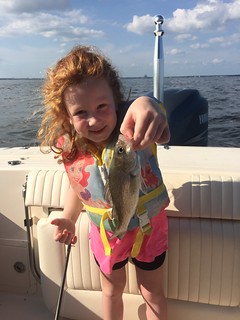
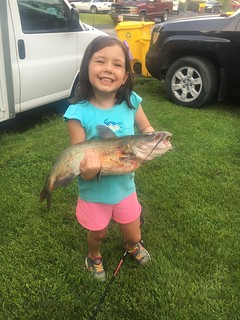
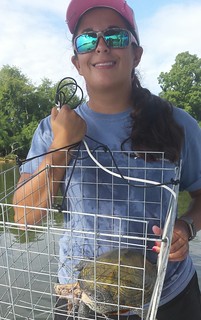
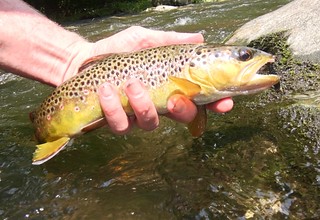
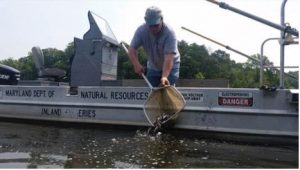
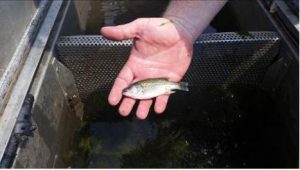
 1-888-373-7888
1-888-373-7888 233733
233733